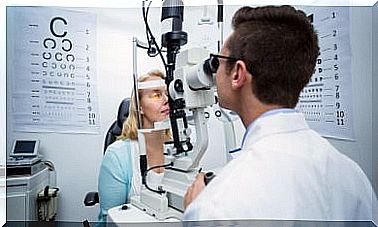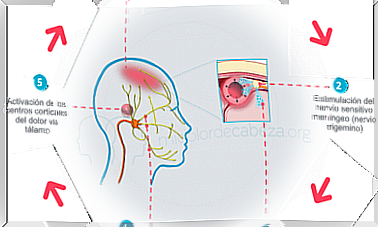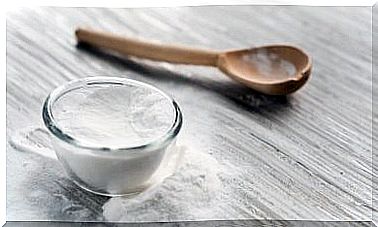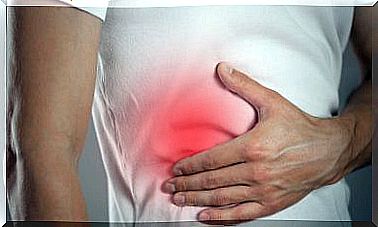Coping With Arrhythmias With Quinidine
Quinidine is an antiarrhythmic drug that belongs to group I of this type of drug. It is a drug whose main indications are the treatment of atrial fibrillation and atrial flutter , the prevention of tachycardia or ventricular fibrillation, the prophylaxis of reentry tachycardia and the maintenance treatment in the restoration of sinus rhythm by electric shock.
The current antiarrhythmic therapeutic base consists of programmed electrical stimulation, implantation of pacemakers and defibrillators, ablation (removal of the organ) and the use of antiarrhythmic drugs. With this, the aim is to modulate cardiac action potentials (they are electrical currents that make the heart beat) by blocking the different ionic currents that produce them.
To better understand how quinidine exerts its effect, below we briefly explain the pathology for which it is indicated.
What is an arrhythmia?
This term refers to an abnormality in the rhythm of the heart, which is the number of beats per minute. The rhythm may be slowed down, called bradycardia, or increased, which is the case with tachycardias.
In this pathology the formation of the cardiac impulse can be affected, appearing alterations in the automatism (ability of the heart to produce electrical stimuli by itself) or in the myocardial activation sequence, generating conduction alterations known as reentries. these being the most common arrhythmias.
Most arrhythmias are harmless, but some can be serious and even life-threatening. During an arrhythmia, the heart may not be able to pump enough blood to the rest of the body. In this situation, the brain, heart, and other organs can suffer major problems.
There are four types of arrhythmias:
- Extrasystoles. It is the most common type of arrhythmia and most of the time they are harmless. They manifest as fluttering in the chest or as a feeling of having missed a beat.
- Supraventricular arrhythmias. They are tachycardias that begin in the atria (upper chambers of the heart) or in the atrioventricular node (group of cells located between the atria and ventricles). Examples of this type of arrhythmias are atrial fibrillation and atrial flutter.

- Ventricular arrhythmias. In this case, the arrhythmias begin in the ventricles, which are the lower chambers of the heart. They can be very dangerous and often require immediate medical attention. Ventricular tachycardia and ventricular fibrillation are found in this type of arrhythmias.
- Bradyarrhythmias. It can happen that during a bradyarrhythmia not enough blood reaches the brain causing the patient to faint.
Mechanism of action of quinidine
Quinidine was the first drug used clinically for the treatment of arrhythmias. It belongs to group I of antiarrhythmic drugs, and within this group, it is classified in group IA. It owes its effect to the ability to inhibit Na channels in the membranes of cardiac cells. By blocking these channels, it prevents the spread of the nerve impulse, thus preventing the heart from pumping blood.
It is capable of reducing the rate of tachycardia, being more effective in atrial and ventricular arrhythmias, because only Na-dependent action potentials originate in these two areas.
By blocking these channels, it reduces the excitability and the conduction velocity of the action potential within the atrium and ventricle. In addition, they also block potassium channels, which results in a prolongation of the duration of the action potential.
Quinidine is a positive inotropic and bathmotropic drug, that is, it improves the contraction capacity of the heart muscle and improves the ability to transmit action potentials.
Pharmacokinetics
Quinidine has good oral bioavailability. It can also be administered intravenously, but in these cases caution must be exercised, as it can cause strong hypotension.
This drug is highly bound to plasma proteins, a fact to take into account if it is administered with other drugs that also have this characteristic. When two drugs that are highly bound to plasma proteins are administered, they can move between them, increasing the proportion of free drug in plasma, which results in an exacerbation of its effects, becoming harmful.
Quinidine undergoes hepatic metabolism, through hydroxylation reactions. As a result of its metabolism it has two active metabolites, the most important being 3-hydroxyquinidine, which has approximately half the antiarrhythmic activity of quinidine.
Adverse reactions
During treatment with quinidine, adverse reactions of gastrointestinal origin are common. These include symptoms such as:
- Diarrhea
- Sickness
- Vomiting

It is possible that together with the administration or with high doses, arrhythmias are triggered and a chronic administration of this drug can develop cinchonism. This adverse reaction is a toxic condition characterized by headaches, deafness, blurred vision, and symptoms of brain congestion. It can also cause hypersensitivity reactions such as fever, asthma, or hematological problems.









